Remember when kitchens weren’t all stainless steel and minimalist design? Before the sleek, digital appliances of today, 1960s kitchens were filled with quirky gadgets, colorful plastics, and items that would baffle many modern cooks. Whether tucked away in a drawer or proudly displayed on the countertop, these nostalgic treasures were once considered essential to any well-equipped kitchen. Take a step back in time with us to explore the curious culinary tools that defined an era.
1. Metal Ice Cube Trays with Levers

Before automatic ice makers became standard in refrigerators, these aluminum trays with their distinctive pull-up levers were a staple in every freezer. The metal conducted cold quickly, but removing the ice required a delicate touch with that center lever mechanism that often stuck or splashed water everywhere. The distinctive cracking sound of pulling the lever is forever embedded in the memory of anyone who grew up in the era. ThoughtCo writes of a history that’s surprisingly extensive for such a simple device.
Many a child burned their fingers trying to pry loose ice cubes that refused to release, leading to the time-honored tradition of running warm water over the bottom while being careful not to melt the precious cargo. These trays often lasted decades, with some families still using grandmother’s original metal trays well into the 1980s despite the availability of plastic alternatives.
2. Pop Bottle Openers Mounted Under Cabinets
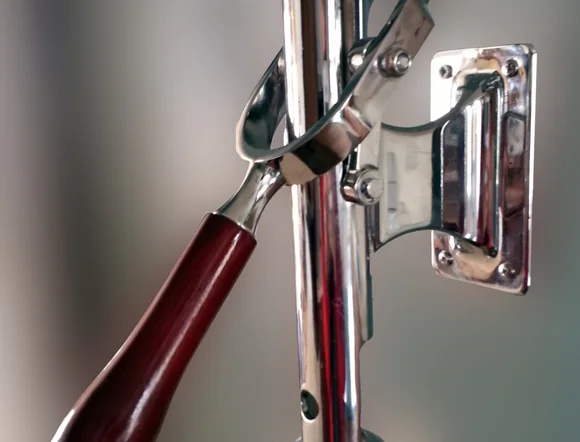
Long before twist-off caps became universal, every kitchen had a bottle opener screwed into the underside of a cabinet or mounted on the wall. These sturdy metal fixtures with their triangular cutting edge were essential for accessing refreshment, especially during summer gatherings and family barbecues. Children would collect the caps that fell into the small metal cup below or, in many homes, simply pinged against the floor. Heddels pops open the bottle on the history of bottle openers.
The distinctive “psssst-pop” sound of carbonation escaping was the soundtrack to countless family meals and neighborhood get-togethers throughout the decade. Some particularly festive households upgraded to novelty openers shaped like fish or mermaids, where the mouth served as the opener—considered the height of kitchen sophistication and humor in mid-century America.
3. Electric Can Openers with Knife Sharpeners
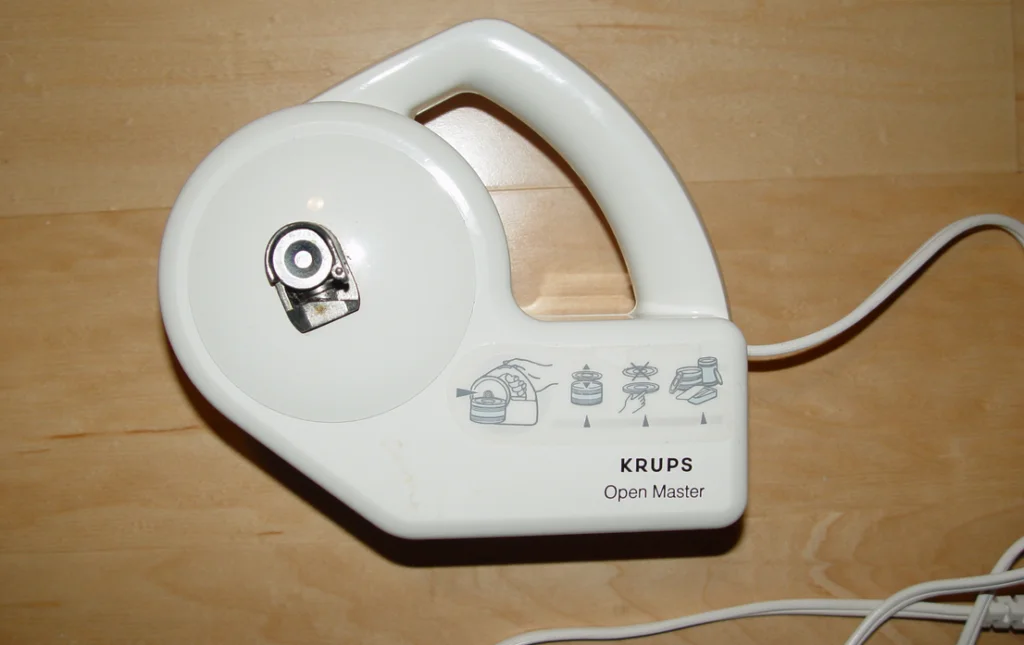
These countertop behemoths took up precious space but were considered the pinnacle of modern convenience worth every square inch. Most featured a combination design with a knife sharpener built into the back, though many families admitted the sharpener function remained perpetually unused. The whirring motor sound announced to everyone in the house that dinner preparation was underway. Mitchell & Cooper puts into perspective how much evolution the can opener underwent to get to that point.
These appliances typically came in harvest gold, avocado green, or burnished copper to match the kitchen’s color scheme. The magnetic lid holder that prevented freshly cut lids from falling into the can’s contents was considered nothing short of miraculous technology, despite the fact that the openers frequently left dangerously sharp edges that tested the reflexes of anyone doing cleanup duty.
4. Fondue Pots and Skewers

No 1960s hostess worth her salt would be caught without a fondue set, preferably in a bright copper or enameled finish with color-coded skewers for each guest. These pots, whether heated by Sterno or electric coils, were essential for the trendy Swiss cheese dips and chocolate dessert fondues that graced every sophisticated dinner party. The ritual of gathering around the bubbling pot transformed ordinary meals into special occasions.
Family fondue nights often involved elaborate rules about what happened if you lost your bread cube in the cheese (traditionally, a forfeit such as singing a song or kissing the person next to you). The once-essential sets were typically wedding gifts that saw heavy rotation for a few years before being relegated to the back of cabinets, emerging annually for New Year’s Eve celebrations or whenever nostalgia struck.
5. Wooden-Handled Pastry Blenders
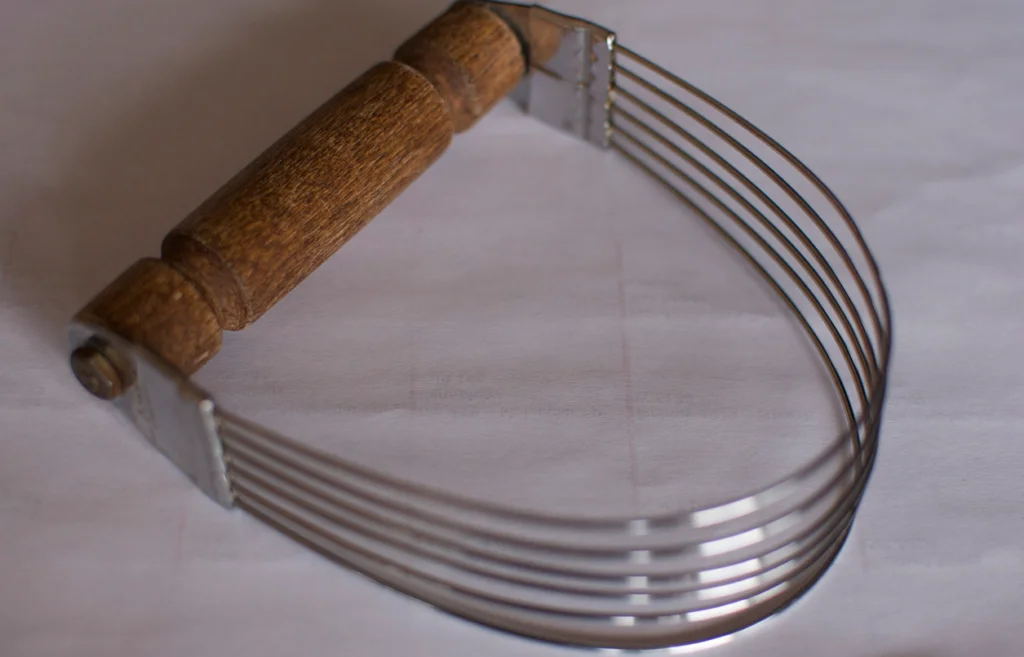
Before food processors automated pastry making, these multi-wire hand tools with their comfortable wooden handles were essential for cutting butter into flour for pie crusts and biscuits. The rhythmic rocking motion required to achieve the perfect “pea-sized crumbs” was a skill passed down through generations. These sturdy tools bore the patina of countless Sunday pie-making sessions and holiday baking marathons.
Many home cooks insisted these manual tools created superior results to any electric alternative, allowing for the perfect touch and preventing over-processing. Grandmothers would often present these well-worn tools to newly married couples along with handwritten recipe cards, ensuring culinary traditions continued uninterrupted despite the decade’s push toward convenience foods.
6. Aluminum Tumblers with Colored Anodized Finish
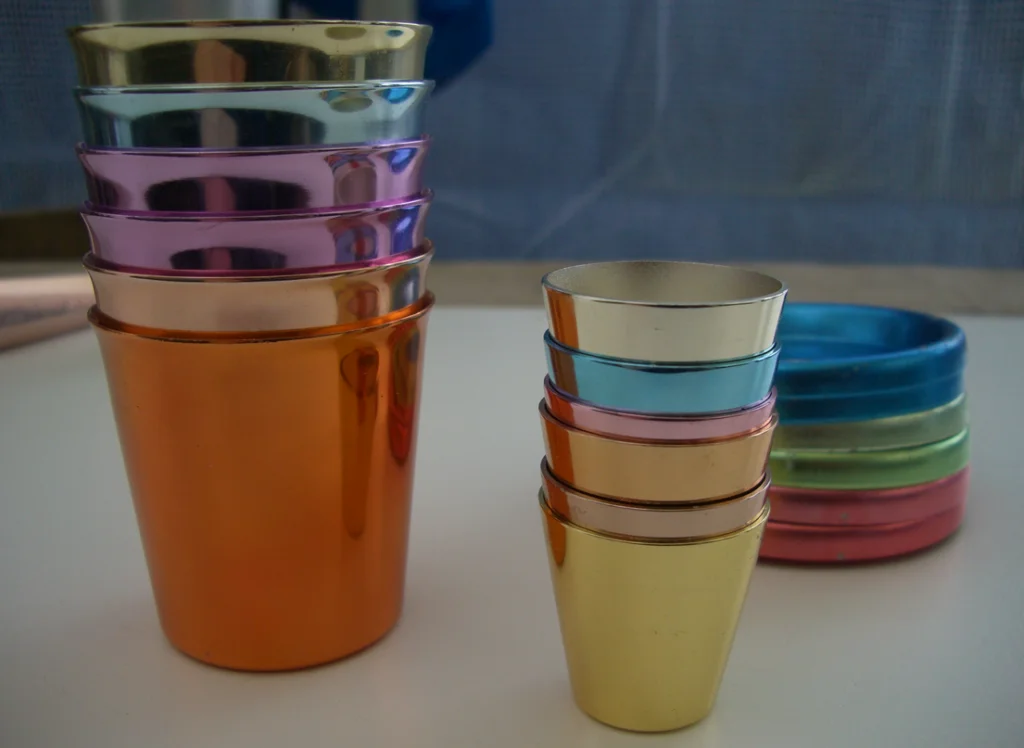
These lightweight, virtually indestructible drinking glasses came in sets of vibrant colors that could withstand drops onto linoleum floors without shattering. The tumblers kept beverages ice-cold and would “sweat” dramatically on humid summer days, necessitating the use of another iconic ’60s kitchen item—the paper napkin tucked under each glass. Many families reserved specific colors for specific family members, avoiding countless mealtime disputes.
The metallic taste these tumblers imparted to beverages was considered a small price to pay for their practicality, especially in households with young children. During outdoor gatherings, these tumblers could be instantly identified among a sea of identical paper cups, and many have survived decades of use to become sought-after vintage items today.
7. Spice Racks with Pre-Filled Glass Jars
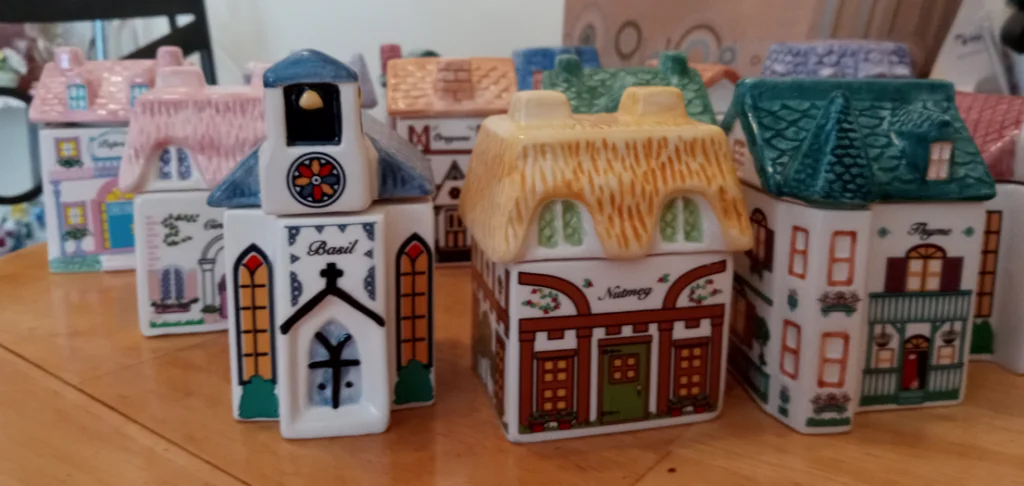
Prominently displayed on kitchen walls, these wooden racks contained perfectly matched glass jars of spices, many of which remained untouched for years beyond their expiration dates. The three-tiered designs typically held between 12 and 24 spices, far more than the average home cook actually used in the limited recipe repertoire of the era. The alphabetical arrangement from allspice to thyme suggested an organization and culinary ambition that reality rarely matched.
These racks were often wedding or housewarming gifts, with the spices themselves serving more as decorative elements than cooking essentials in many homes. The mysterious “poultry seasoning” and rarely-used savory sat gathering dust while workhorses like garlic salt and cinnamon required regular refilling, creating mismatched jars that disturbed the visual harmony but reflected the reality of American cooking habits.
8. Plastic Lettuce Crispers
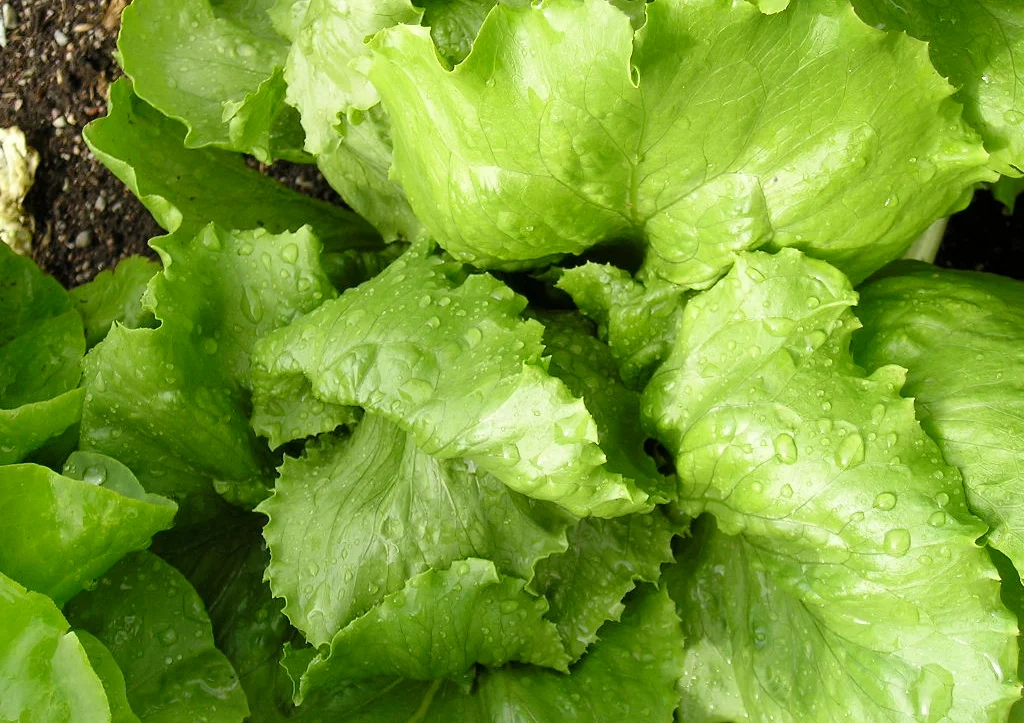
These specialized containers promised to keep iceberg lettuce (the era’s green of choice) fresh far longer than ordinary storage methods. The dome-shaped containers featured ridged bottoms that allegedly kept moisture away from the lettuce leaves and often included a center spike upon which the core would be impaled. Transparent lids allowed for quick inventory checks without disturbing the carefully maintained environment inside.
Despite dubious effectiveness, these dedicated containers occupied prime refrigerator real estate in most households throughout the decade. The satisfying “whoosh” sound when opening the vacuum-sealed lid convinced users that science was indeed preserving their salad ingredients, even when the results suggested otherwise.
9. Rotary Egg Beaters
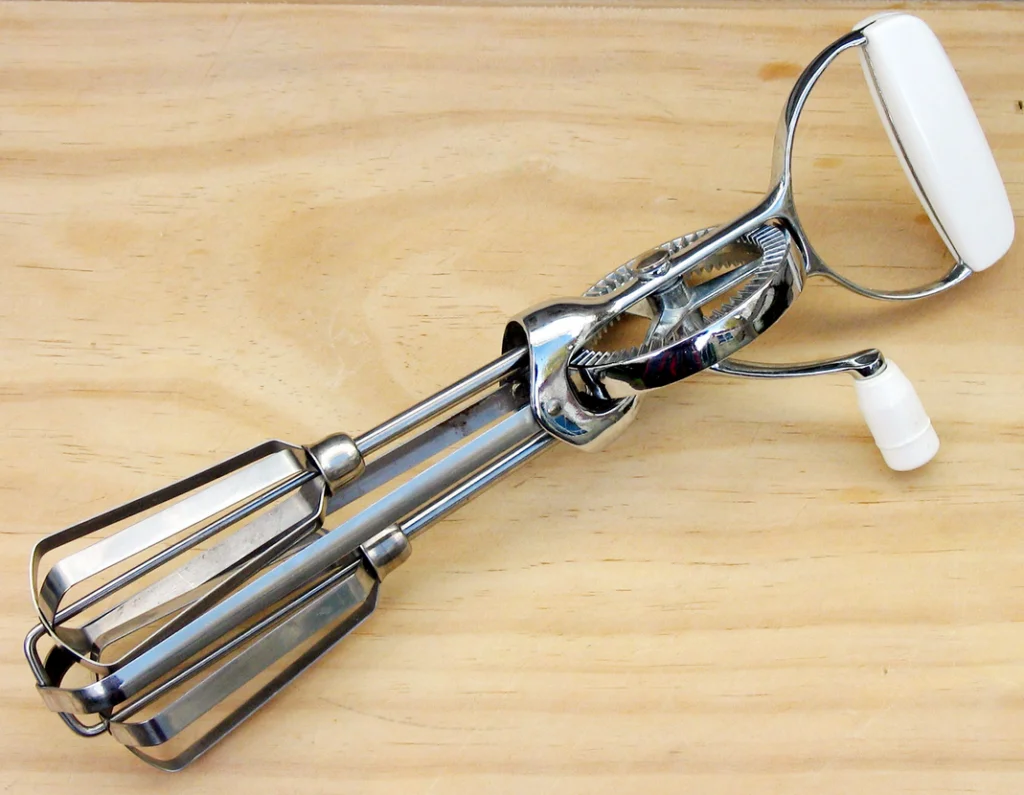
With their red wooden handles and gleaming metal gears, these hand-cranked mixers required elbow grease but delivered reliable results for everything from scrambled eggs to whipped cream. The distinctive whirring sound and clinking of the metal beaters against mixing bowls created the soundtrack of weekend breakfast preparations across America. Children frequently lobbied for turns cranking the handle, though their enthusiasm typically waned before stiff peaks formed.
Many households kept these trusted tools even after acquiring electric mixers, insisting certain recipes simply turned out better with the controlled, gentle action of the manual beater. The deep drawers in 1960s kitchen cabinets seemed specifically designed to accommodate these tall, ungainly tools that resisted neat storage but earned their place through sheer utility.
10. Toast-R-Ovens
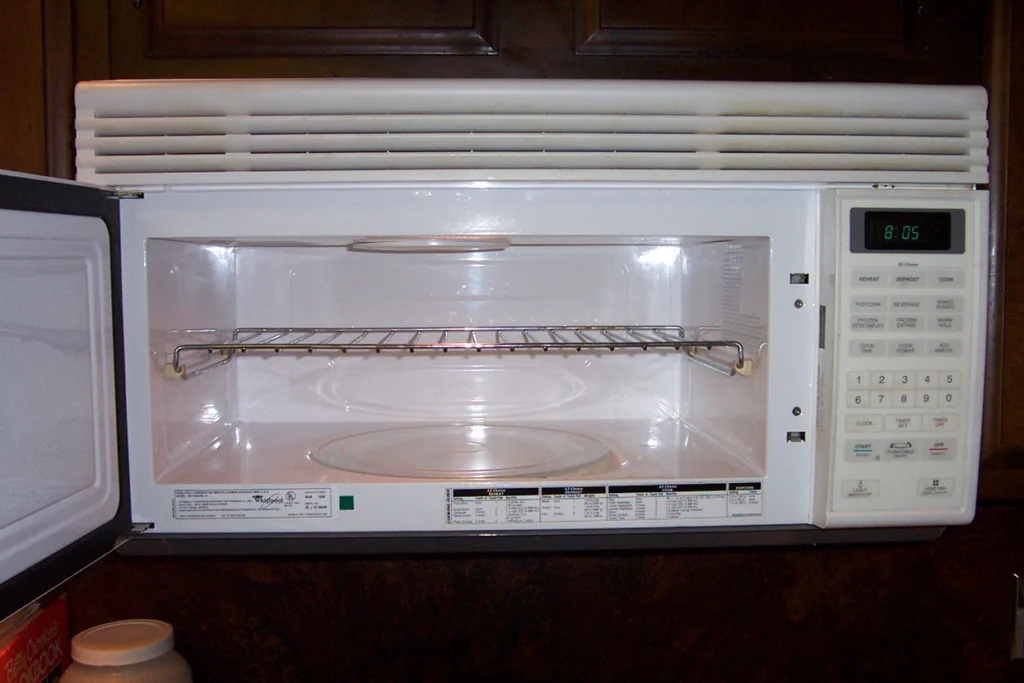
Before microwaves conquered countertops, these versatile appliances served as second ovens for busy family meals and reheating duties. The compact design could accommodate four slices of toast, a 9-inch pizza, or a small casserole, making it perfect for teenage after-school snacks or warming dinner rolls. The distinctive “ding” when the mechanical timer reached zero prompted a Pavlovian response from hungry family members.
These workhorses typically featured removable trays for cleaning crumbs—a maintenance task often neglected until smoke signals indicated attention was overdue. Despite their small size, Toast-R-Ovens generated impressive heat, turning small kitchens into sweltering environments during summer months but providing welcome warmth during winter cooking sessions.
11. Copper Jell-O Molds
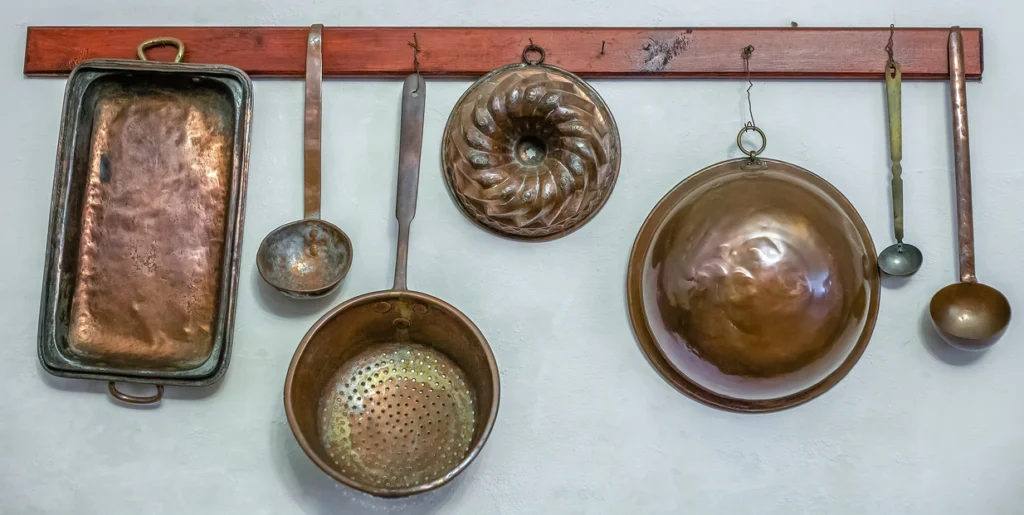
Gleaming on kitchen walls as decoration until called into service for special occasions, these specialized molds transformed simple gelatin into elaborate centerpieces. The intricate designs—from bundt shapes to detailed fish forms—elevated the humble Jell-O salad to art form status at church potlucks and holiday gatherings. Successfully unmolding the finished creation required techniques bordering on kitchen witchcraft, involving perfect timing and brief dips in warm water.
The most dedicated hostesses maintained collections of multiple shapes and sizes, allowing for tiered creations that combined complementary flavors and colors. Recipe boxes of the era overflowed with index cards detailing prized combinations—lime with pineapple chunks, strawberry with suspended banana slices, and the perplexing tomato aspic that has thankfully faded from modern menus.
12. Electric Lazy Susan Hot Plates
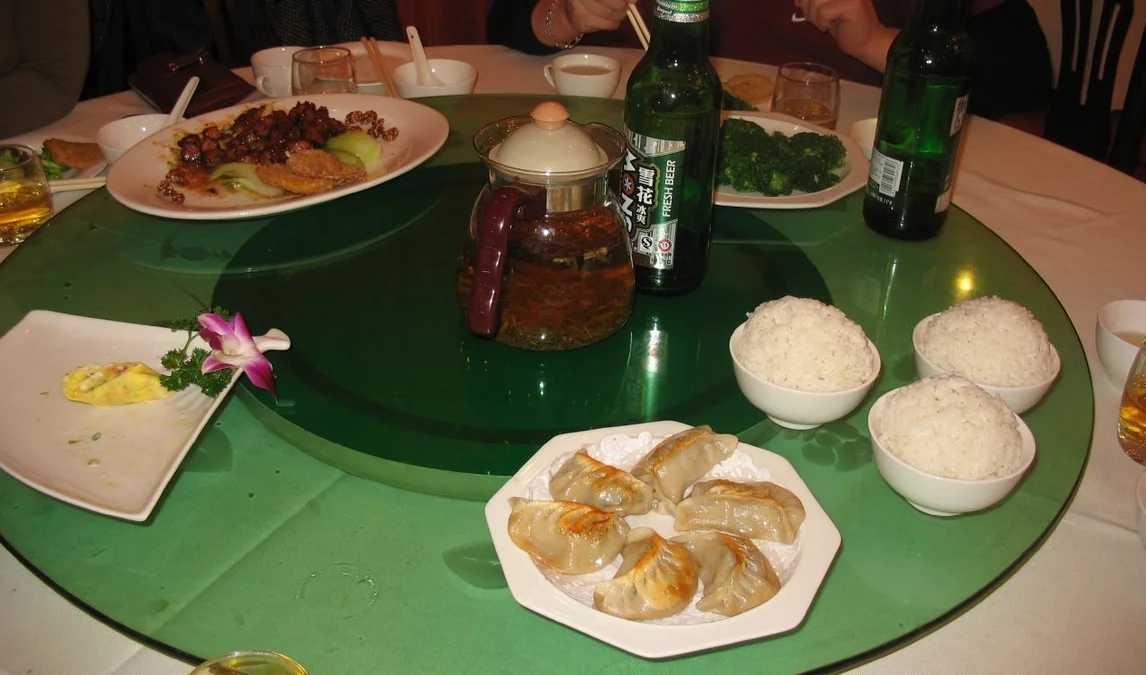
The height of entertaining sophistication, these rotating warming trays plugged into wall outlets and kept appetizers or buffet dishes at serving temperature throughout long parties. The gentle heat preserved casseroles and chafing dish contents without scorching, while the rotation mechanism ensured guests could access all offerings without awkward reaching. The distinctive electric cord often required creative furniture arrangement to position the unit within reach of outlets.
These substantial appliances would emerge from storage for bridge clubs, holiday open houses, and anniversary celebrations before returning to their dedicated spots in spacious 1960s kitchen cabinets. The steady, low hum they emitted joined the cocktail conversation soundtrack at countless suburban gatherings, along with the distinctive click-click-click of the rotation mechanism when enthusiastic guests spun them too forcefully.
From specialized single-purpose gadgets to multipurpose workhorses, these kitchen items reflected an era when convenience was king but technology hadn’t yet streamlined cooking tasks to today’s standards. While many have disappeared from modern kitchens, they live on in flea markets, vintage shops, and perhaps in the back of your grandmother’s junk drawer—quirky reminders of how we once prepared daily meals and special occasions alike.


